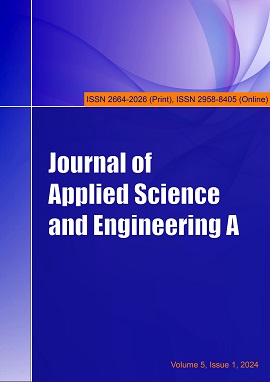Research of non-equilibrium dynamic of pasture ecosystems in Mongolia
DOI:
https://doi.org/10.5564/jase-a.v5i1.3399Keywords:
non-balanced dynamic, biomass, pasture of ecosystem, coefficient of variation, system dynamics modelAbstract
Wiens, DeAngelis and Waterhouse, and Ellis and Swift first introduced the concept of non-equilibrium rangelands. In 1988, Ellis and Swift further proposed that rainfall variability could degrade rangeland ecosystems, with non-equilibrium conditions arising when the rainfall coefficient of variation surpasses 33%. It means that rangeland’s dynamics, particularly livestock dynamics, are governed by frequent droughts. Direct application of this statement in Mongolia shows that the drylands of Mongolia with annual precipitation of less than 175 mm exhibit non-equilibrium dynamics. These areas include the Gobi and the southern part of the dry steppe. Based on the above theoretical basis and research, the precipitation coefficient of variability in Mongolia was re-mapped using data from a total of 68 stations. Otherwise, for the above stations the analysis was done using 58 year time series, and the above stations were generated by creating a geographical distribution. One of the goals of this work was to show the results of coefficient of variation for natural zones. From the resulting map, shows an expanding area with a precipitation coefficient of variability exceeding 33%, and in terms of natural zones, a greater spread is observed towards the steppe region. This indicates that the area of unbalanced pasture ecosystems is expanding, and it shows the need for alternative management solutions at the level of livestock sector and pasture utilization in the region. Another important point is that global warming, livestock numbers, and pasture overcapacity are significantly affecting the imbalance in the above-mentioned pasture ecosystem, so further comprehensive studies are needed.
Downloads
267
References
1. A.Bakei, R.Samiya, J.Jargal, Yu.Altanbagana, Guidelines, Implementation recommendations for livestock development policy reform, 2023.
2. L.Natsagdorj, G.Sarantuya, B.Munkhbat, The most recent climate change in Mongolia: Drought, Ulaanbaatar, 2024.
3. Ministry of Food, Agriculture and Light Industry, Improving the climate change adaptation capacity and risk management of rural Mongolian communities, Ulaanbaatar, 2023.
4. F. S. Nathan, K. D. Diana, B. Brandon and C. W. Jeb, Rangelands: Where anthromes meet their limits, MDPI, no. land6020031, May 2017.
5. J. Wiens, On understanding a non-equilibrium world: myth and reality in community patterns and processes, Ecological Communities, 1984.
6. D. L. DeAngelis and J. C. Waterhouse., Equilibrium and nonequilibrium concepts in ecological models, Ecological Monographs, pp. 1-21, 1987.
7. J. E. Ellis and D. M. Swift, Stability of African pastoral Ecosystems: Alternate Paradigms and Implications for Development., Journal of Range Management, vol. 41, pp. 450-459.
8. Ellis, E. C. Ramankutty, N., Putting people in the map: Anthropogenic biomes of the world., Frontiers in Ecology and the Environment, vol. 6, pp. 439-447, 2008.
9. Y. Batchuluun, The Physical Geography of Mongolia, Switzerland: Springer Cham, 2021.
10. G. R. Allington, L. Wei and D. G. Brown, Modeling System Dynamics in Rangelands of the Mongolian Plateau, Building Resilience of Mongolian Rangelands, pp. 216-221, 2015.
Downloads
Published
How to Cite
Issue
Section
License
Copyright (c) 2024 Davaasuren Chimedregzen, Chuluun Togtokh, Altanbagana Myagmarsuren

This work is licensed under a Creative Commons Attribution 4.0 International License.
Copyright on any research article in the Journal of Applied Science and Engineering A is retained by the author(s).
The authors grant the Journal of Applied Science and Engineering A a license to publish the article and identify itself as the original publisher.

Articles in the Journal of Applied Science and Engineering A are Open Access articles published under a Creative Commons Attribution 4.0 International License CC BY.
This license permits use, distribution and reproduction in any medium, provided the original work is properly cited.




